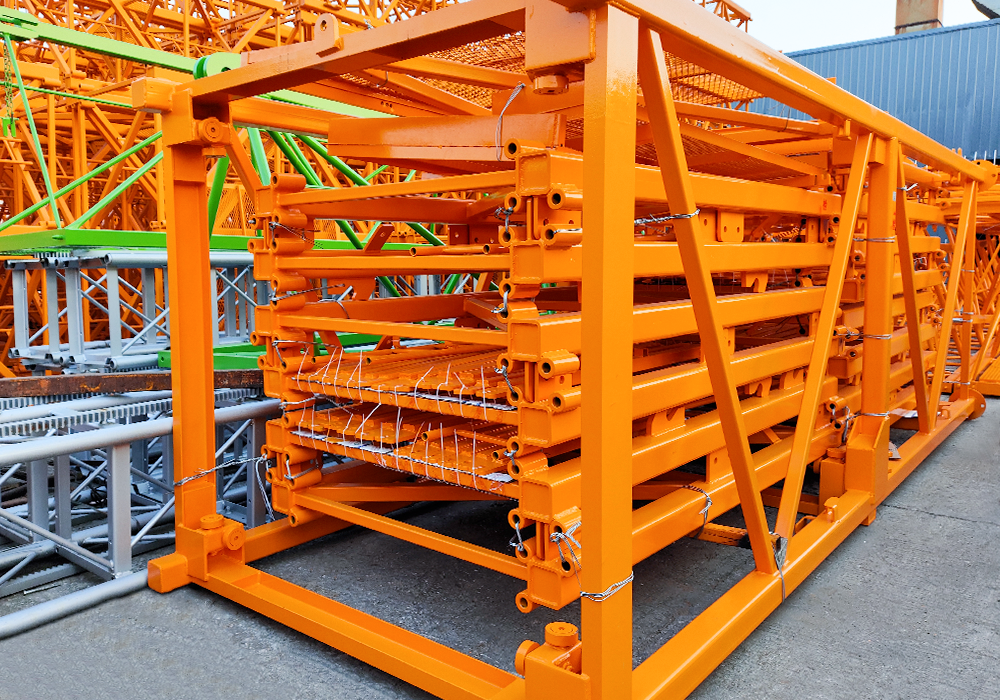
1. Preparatory work before construction
Foundation inspection and installation requirements
The foundation of the Construction Elevator must be installed strictly in accordance with the drawings and instructions, and the foundation must be inspected before installation to ensure that its bearing capacity meets the requirements. Drainage facilities should be set up around the foundation, and protective fences should be equipped to prevent people from entering dangerous areas.
Equipment inspection and acceptance
Before use, the construction elevator needs to be fully inspected, including the strength, rigidity and stability of key components such as guide rails, wall brackets, wire ropes, and cages. Newly installed or overhauled elevators must pass acceptance tests and inspections before they can be put into use.
Electrical and mechanical device inspection
Ensure that the electrical device meets the requirements of "one machine, one leakage, one gate, and one protection", the appearance of the distribution box is intact, and there is no debris in the box. At the same time, check whether the brakes, limiters, anti-fall safety devices and other devices are sensitive and effective.
Environmental and weather conditions
The Construction Elevator should avoid operating in bad weather, and should be stopped when the wind force reaches level 6 or above. The construction site should be kept clean, obstacles should be removed, and there should be no flammable or explosive items around the elevator.
2. Safety measures during operation
Driver qualifications and operating specifications
Construction elevator drivers must undergo professional training and hold a certificate to work, and be familiar with equipment performance and maintenance knowledge. The following regulations should be observed during operation:
Overload operation is not allowed, and the load should be evenly distributed.
Before each start, the whistle should be sounded to warn and check whether the surrounding environment is safe.
When the upper and lower limits are reached, the travel switch shall not be used as a collision switch.
The driver shall not leave his post without permission. When leaving, the power supply shall be cut off and the electrical box door shall be locked.
Protective facilities and safety devices
Construction elevators should be equipped with safety devices such as anti-fall safety devices and broken rope protection devices, and their sensitivity and reliability should be checked regularly.
A passage platform should be set between the cage door and the floor door, and the height of the guardrail should not be less than 1.2 meters.
A protective door should be installed at the entrance of each floor station to ensure that the cage door can be closed before starting.
Emergency handling
In the event of a fault or emergency, the driver should immediately stop the machine and cut off the power supply, and notify relevant personnel for maintenance.
A detailed emergency plan should be formulated at the construction site, and simulation drills should be organized regularly.
Daily maintenance and inspection
Construction elevators should be inspected before work every day, including the wear of the wire rope, lubrication, and whether the electrical system is normal.
A comprehensive inspection should be carried out every week, focusing on the structural connection, bolt tightening, and the reliability of the limiter.
A comprehensive overhaul should be carried out once a month to ensure that the equipment is in good condition.
3. Special requirements for construction elevators
Intelligent management
With the development of technology, intelligent construction elevators have gradually become popular. These devices have the functions of automated operation, real-time monitoring, and fault warning, which can significantly improve safety.
Multi-layer protection and interlocking devices
Construction elevators should be equipped with interlocking protection devices to ensure that they can only be started or stopped after the door is closed and locked.
Construction elevators used in high-rise buildings should be equipped with ground protection fences to prevent people from falling.
Load and speed control
The load shall not exceed the rated load, and it is strictly forbidden to carry people in the cage.
During operation, frequent lifting and lowering should be avoided, and the lifting speed should be kept stable.
4. Installation and disassembly of construction hoists
Installation work requirements
The installation work should be carried out under the guidance of the designated commander, and other personnel shall not issue instructions.
After the installation is completed, a rated load drop test is required to ensure the reliable performance of the equipment.
Disassembly work requirements
The disassembly work must also be carried out under the guidance of the designated commander, and non-operating personnel are not allowed to enter the warning area.
Measures should be taken to prevent the equipment from tipping over or sliding during the disassembly process.
5. Safety management and supervision
Safety management system
The construction unit should establish a sound safety management system, clarify the safety responsibilities of personnel at all levels, and regularly train operators.
Supervision and inspection
The construction unit, supervision unit and construction unit should strictly supervise the use of the construction hoist to ensure that the equipment meets safety regulations.
Emergency plans and drills
The construction site should formulate a detailed emergency plan and organize drills regularly to improve the ability to respond to emergencies






 English
English русский
русский Español
Español 中文简体
中文简体
















